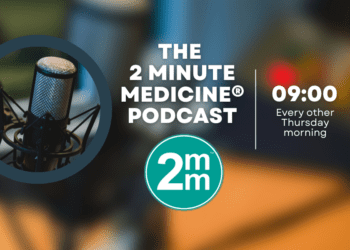Etiology of pediatric bacteremia and empiric treatment time vary
1. From 2001 to 2011, there was a decrease in the rate of vaccine-preventable bacteremia and a concomitant increase in rates of gram-negative bacteremia noted in a busy United Kingdom emergency department (ED).
2. Patients with vaccine-preventable bacteremia waited less time for empiric treatment compared to those with other causes of bacteremia.
Evidence Rating Level: 2 (Good)
Study Rundown: Bacteremia in children carries a significant rate of morbidity and mortality, and requires prompt recognition and appropriate treatment to minimize complications. A better understanding of infectious etiologies can lead to rapid recognition and more appropriately tailored treatments, factors critically important in pediatric bacteremia management. This study examines and clarifies recent changes in the etiologies of pediatric bacteremia. All confirmed pediatric cases of bacteremia from 2001 to 2011 in one United Kingdom ED were analyzed. There was a decrease in vaccine-preventable etiologies of bacteremia and an increase in gram negative bacteremia over this time period. Rates of community-acquired bacteremia decreased while healthcare associated (HCA) infections, defined as community acquired infections with characteristics of hospital-acquired disease, increased. Time to treatment was shorter among patients with vaccine-preventable etiologies. In addition, these cases were almost entirely susceptible to empiric antibiotic treatment while overall, susceptibility to empirical antibiotics declined over time. Over the 11 years studied, an increase in time to antibiotics was noted, with patients suffering from gram-negative bacteremia experiencing a greater increase in time to empiric treatment. The changing trend in bacterial etiology highlights the need for adjustments in treating pediatric patients with bacteremia. While this study highlights important changes over time, the generalizability of the conclusions is limited by the single-center scope.
Click to read the study published in Pediatrics
Study Author, Dr. Adam D. Irwin, MRCPCH, talks to 2 Minute Medicine: University of Liverpool, Department of Women’s and Children’s Health, Institute of Translational Medicine, Liverpool, United Kingdom.
“Over the 11 years of the study in a large children’s Emergency Department, bacteraemia caused by vaccine preventable infections, such as Streptococcus pneumoniae, substantially declined, whilst Gram negative infections and healthcare-associated infections increased.
Healthcare-associated bacteraemia were demonstrated to be more likely resistant to empirical antibiotics, and were associated with delayed administration of antibiotics and increased length of hospital stay. Improved diagnostic tools to recognise bacteraemia should be developed, alongside continued surveillance of aetiology and resistance.”
In-Depth [retrospective cohort study]: This study analyzed all 575 episodes of bacteremia in 525 children presenting to the Alder Hey Children’s Hospital ED in the United Kingdom, from 2001 through 2011. The etiology of bacteremia varied by age, with young infants presenting most often with E. coli and Group B streptococcus, children between 1 and 5 years old presenting with S. pneumoniae and N. meningitidis, and those over 5 years old most commonly presenting with S. aureus. Overall, the rate of children with clinically significant bacteremia was 1.42 per 1000 ED visits (95%CI 1.31-1.53). Over the 11 years studied, the rate of vaccine-preventable etiologies decreased. Most notably, the introduction of the pneumococcal conjugate vaccine in 2006 was associated with a 49% reduction in pneumococcal bacteremia (95%CI 32-74). In the meantime, the rate of gram-negative bacteremia increased from 0.24 to 0.53 per 1000 ED visits. Likelihood of susceptibility to empirical antibiotic therapy decreased from 96.3% (95%CI 92.1-98.2) to 82.6% by 2011 (95%CI 69.8-90.7). Specifically, 99% of vaccine preventable etiologies were susceptible to empiric therapy while 22% of gram-negative bacteria were resistant (p < 0.001). Compared to vaccine-preventable etiologies, time to antibiotic treatment was increased by 57 minutes in gram-negative infections.
Image: PD
©2015 2 Minute Medicine, Inc. All rights reserved. No works may be reproduced without expressed written consent from 2 Minute Medicine, Inc. Inquire about licensing here. No article should be construed as medical advice and is not intended as such by the authors or by 2 Minute Medicine, Inc.




![Oral amoxicillin as effective as injectable benzylpenicillin-gentamicin for infants with infection in which referral not possible [AFRINEST Trial]](https://www.2minutemedicine.com/wp-content/uploads/2015/04/NOVAMOXIN_antibiotic-350x250.jpg)


